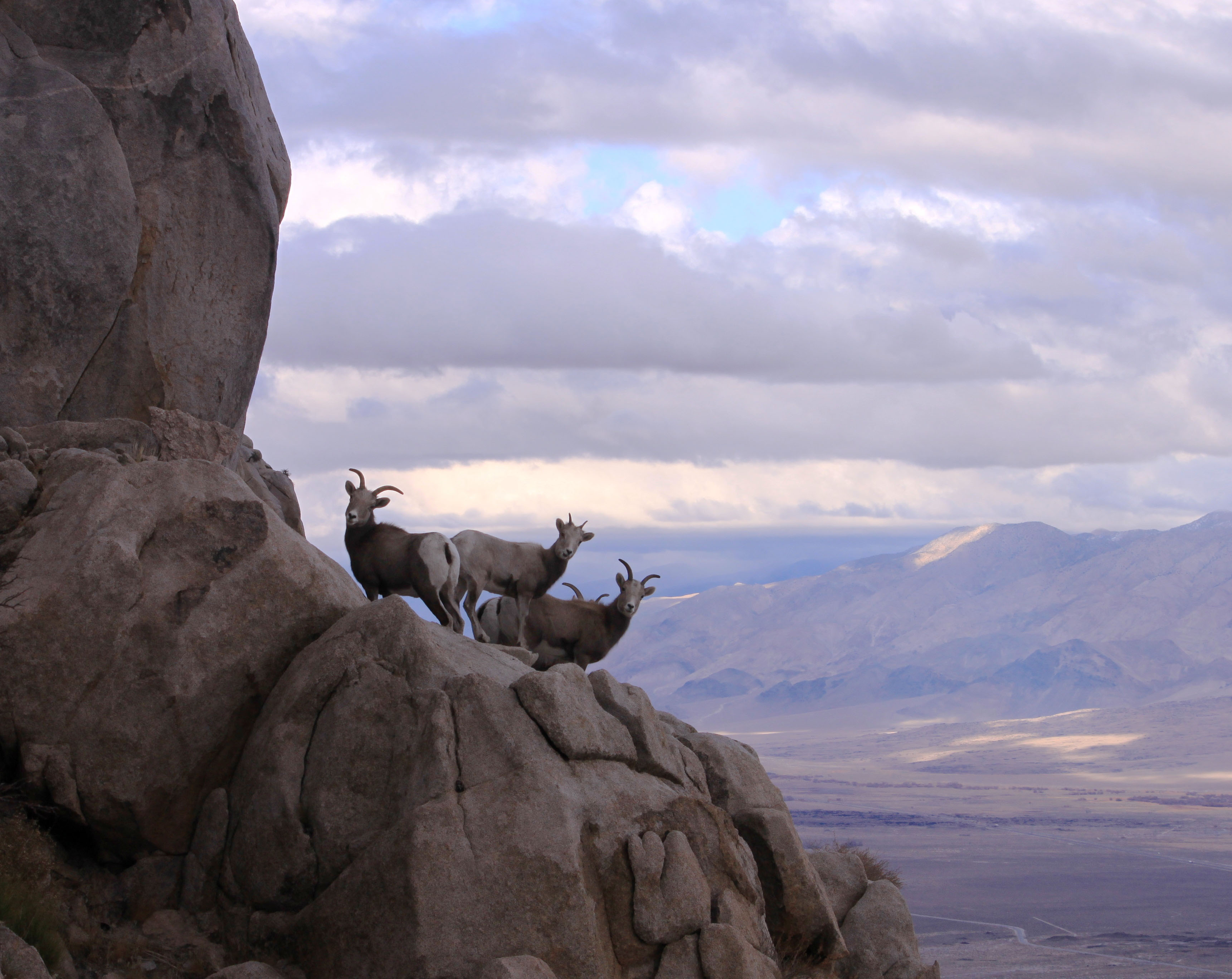For 30 years, Yosemite Conservancy has provided funds to Yosemite National Park to protect Sierra Nevada bighorn sheep, one of the rarest large mammals in North America. Thanks to Conservancy support, wildlife managers have re-introduced this endangered species back into their Yosemite habitat and continue to monitor the population expansion.
Returning Bighorns to Yosemite
In 1986, a donation from the Yosemite Fund (now Yosemite Conservancy) catalyzed the return of Sierra Nevada bighorn sheep to mountains along Yosemite’s eastern edge. The introduction of that new Yosemite herd represented an important stride in efforts to bring the sheep back from the brink of extinction, but additional work was needed to ensure the recovery of the species.
By 2000, the bighorn population had hit a low of about 100 individuals, and the sheep were named a federally endangered species. Sierra Nevada bighorn numbers have since risen to more than 500, but the sheep continue to face many challenges, such as disease spread from domestic sheep in neighboring herds.
In 2015, Conservancy donors funded another landmark chapter in the bighorns’ story: the introduction of an additional Yosemite herd, this time in the Cathedral Range, an offshoot of the Sierra Nevada in the heart of the park’s wilderness. The Cathedral Range is an ideal location for the bighorns, with plenty of food, protection from disease-carrying domestic sheep, the potential for overlap with the 1986 herd, and, of course, the rocky, high-altitude habitat where these “animal mountaineers” thrive. The Cathedral Range is also an ancestral habitat for the Sierra Nevada bighorns — and their return in March 2015 was the first time the sheep had scrambled through those wild mountains in more than 100 years.
GPS Collaring and Online Tracking
Yosemite Conservancy has helped protect bighorn sheep by funding GPS collars to track their movements. The Conservancy also funded the creation and management of website applications that allow for the online tracking of individual sheep. By closely following sheep travels, as well as lambing sites, wildlife managers can quickly intervene to protect the sheep from potential threats, such as when they wander too close to domestic herds, putting them at risk for exposure to deadly diseases. Through Conservancy-supported field work, the park’s wildlife team has been able to monitor the health of the herds and make informed decisions about introducing additional rams or ewes. Scientists have also been able to collect and study samples from the bighorns’ habitat in order to learn more about the sheep’s genetics, diet and behavior.

